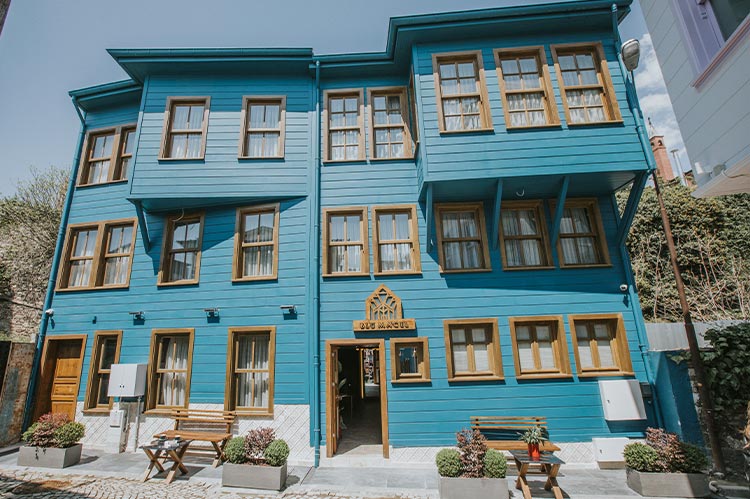
Nestled in the historic peninsula of Istanbul, Sultanahmet stands as a beacon of history, not merely a district but a living museum. Its ancient streets and magnificent structures echo centuries of history, resonating with the legacy of emperors and sultans. Known as the heart of old Constantinople, Sultanahmet is steeped in a rich past that captivates history enthusiasts and casual visitors alike.
This area offers a journey back in time, where every stone and corner has a story to tell. From its majestic mosques to grand palaces and beyond, Sultanahmet epitomizes the grandeur of civilizations that have shaped its landscape. It's a place where the past and present seamlessly intertwine, offering a unique glimpse into the soul of one of the world's greatest cities.
In this comprehensive guide, we will delve deep into the rich history of Sultanahmet. We'll explore its must-see historical sites, each a testament to the cultural and architectural heritage of Istanbul. From the awe-inspiring Hagia Sophia to the majestic Blue Mosque and the opulent Topkapi Palace, these landmarks are not just attractions but symbols of a bygone era that continue to fascinate and inspire.
Content Suggestion: Exploring the Arasta Bazaar in Sultanahmet
The Historical Significance of Sultanahmet
Sultanahmet's history is as old as Istanbul itself, dating back to Byzantine times when it was known as Constantinople. This area has been the center of three empires: Roman, Byzantine, and Ottoman, each leaving its indelible mark. It's a place where every corner tells a story, from the fall of Constantinople to the rise of the Ottoman Empire.
Byzantine Era: The Foundation
Sultanahmet's journey through time begins with its founding by Greek colonists. This strategic location, overlooking the Bosphorus, caught the eye of Roman Emperor Constantine the Great, who, in 330 AD, transformed it into the new capital of the Roman Empire. This significant move marked the start of the Byzantine Era, a period that would see the city flourish as a beacon of Christianity and culture.
During this era, Constantinople (modern-day Istanbul) became a melting pot of art, religion, and learning. The construction of key landmarks like the Hagia Sophia was emblematic of this period. Initially built as a basilica, the Hagia Sophia stood as a masterpiece of Byzantine architecture and a symbol of the city's importance to Christianity. It was later converted into a mosque, reflecting the region's religious and cultural transformations over the centuries.
Ottoman Era: A New Chapter
The Ottoman conquest of Constantinople in 1453 marked a profound shift in the history of Sultanahmet. Under the leadership of Sultan Mehmed II, famously known as Mehmed the Conqueror, the district entered a new era. The transformation of the city into a thriving Islamic center was rapid and impactful, with the construction of grand mosques, palaces, and public works that reshaped the skyline of Istanbul.
One of the most iconic symbols of this transformation is the Blue Mosque, also known as Sultanahmet Mosque. Renowned for its striking blue Iznik tiles and distinctive six minarets, the Blue Mosque is a masterpiece of Ottoman architecture. It not only serves as a place of worship but also stands as a testament to the architectural and cultural ingenuity of the Ottoman Empire. The mosque's construction in the early 17th century was a statement of power and artistry, further cementing Istanbul’s status as the heart of the Ottoman world.
Exploring Sultanahmet's Historic Sites
Hagia Sophia: A Marvel of Engineering
The Hagia Sophia, with its massive dome and intricate mosaics, represents a fusion of Byzantine and Islamic architecture. Originally a church, then a mosque, and now a museum, it embodies the cultural and religious changes that have swept through the region.
Content Suggestion: Hagia Sophia: A Timeless Masterpiece in the Heart of Istanbul
The Blue Mosque: An Iconic Symbol
Opposite the Hagia Sophia lies the Blue Mosque, famous for its six minarets and beautiful blue Iznik tiles. It's a functioning mosque as well as a major tourist attraction, blending spiritual reverence with historical significance.
Topkapi Palace: A Glimpse into Ottoman Royalty
Topkapi Palace, once the residence of Ottoman sultans, now serves as a museum, showcasing imperial collections, including the Prophet Muhammad's cloak and sword. The palace's architecture and its harem give a unique insight into Ottoman royal life.
A visit to Sultanahmet is a journey through the pages of history. Its streets and buildings are not just architectural marvels but narrators of the past, each with its own story. Whether you're marveling at the Hagia Sophia, wandering through the courtyards of Topkapi Palace, or admiring the beauty of the Blue Mosque, Sultanahmet offers a profound connection to the rich tapestry of Istanbul's history.







